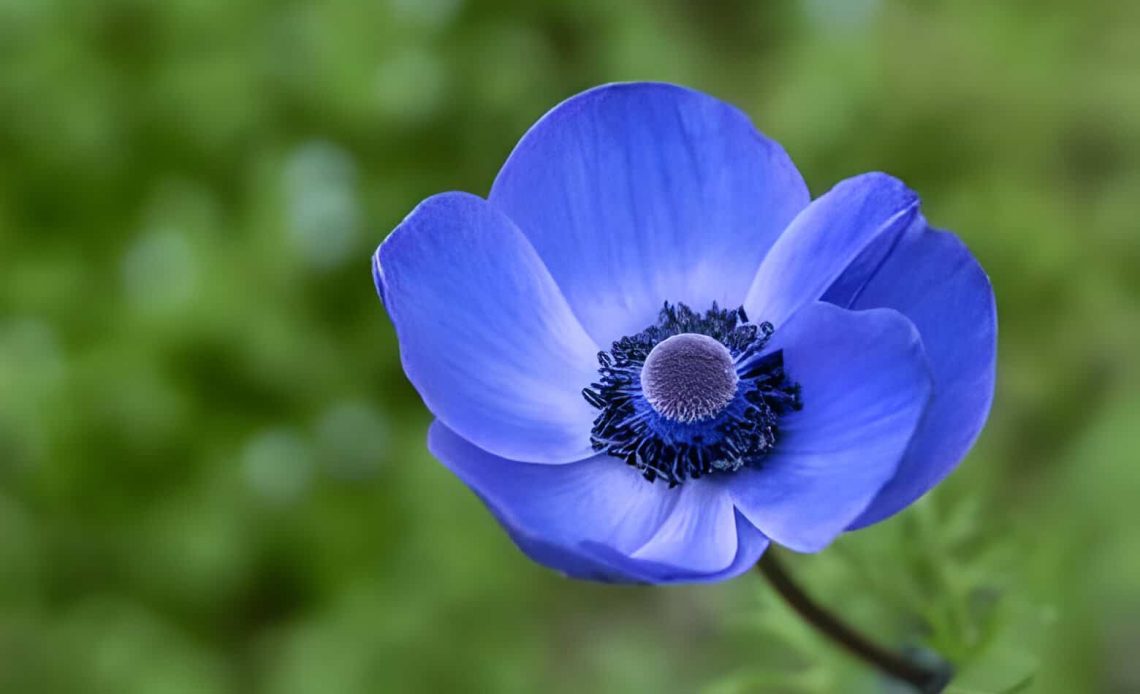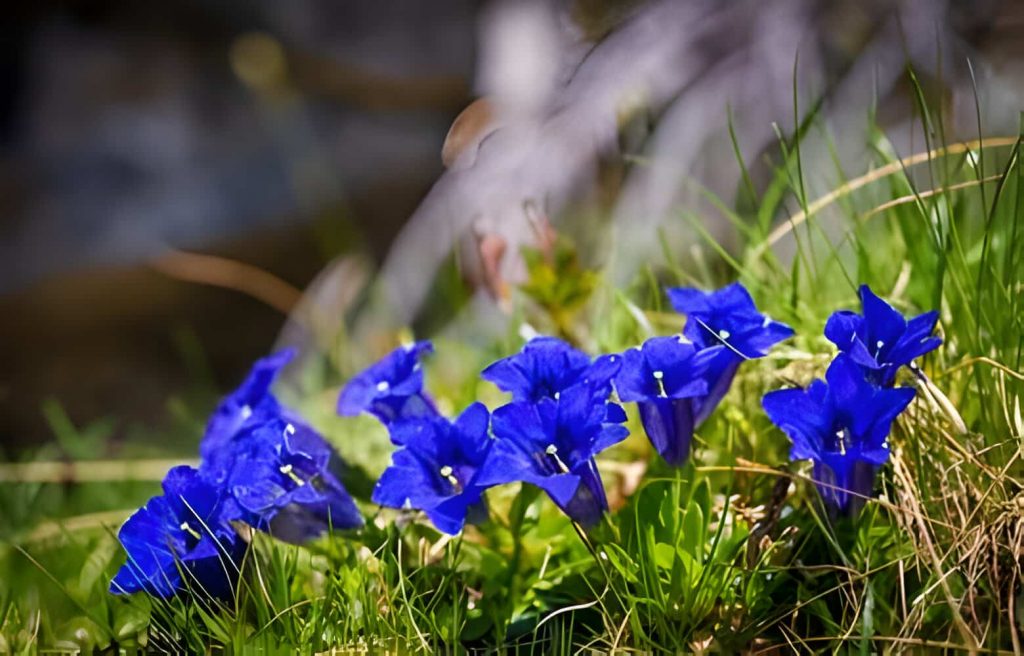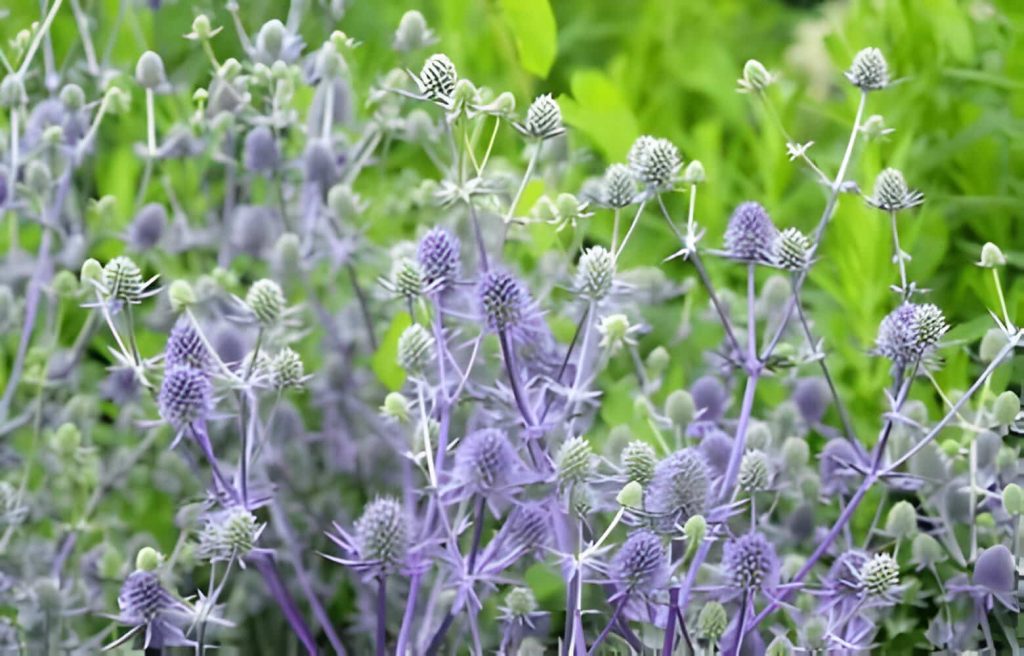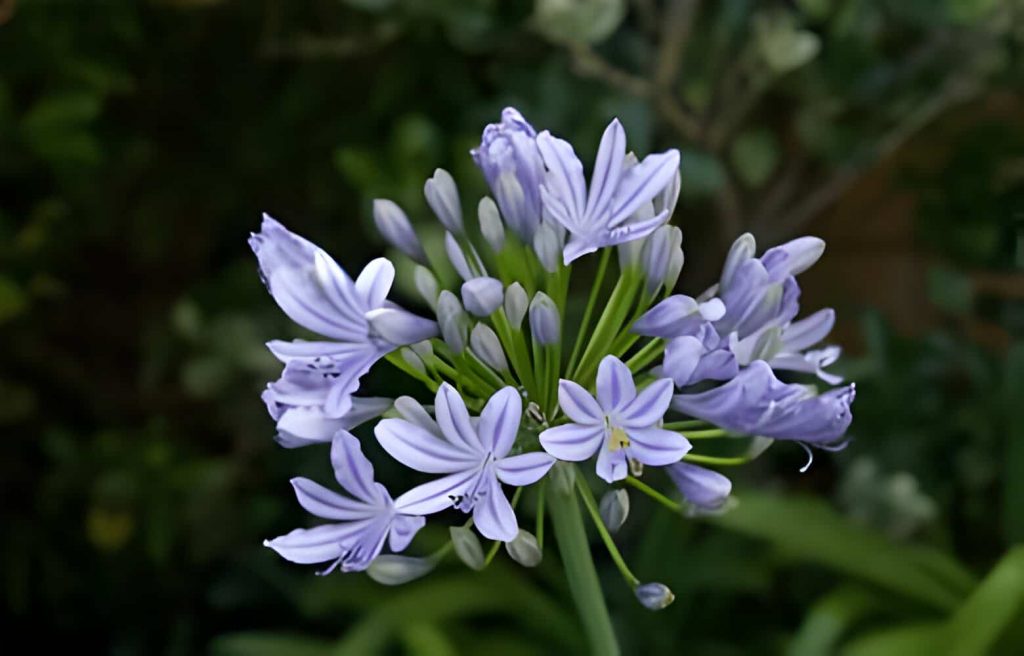
Blue flowers have a meaning that transcends their captivating beauty. Across cultures and throughout history, these blooms have symbolized a variety of emotions and ideas. Whether you’re looking for the perfect flower to express trust, peace, or even sorrow, there’s a blue blossom waiting to speak your heart’s message. This guide will delve into the symbolic language of blue flowers, along with some popular varieties and their unique meanings. So, get ready to explore the world of captivating blues and discover the perfect bloom to convey your sentiments!
What Do Blue Flowers Mean?
The meaning of blue flowers is deeply intertwined with their enchanting color. They are often associated with serenity, tranquility, and calmness, reflecting the soothing hues of the sky and sea. The color blue also symbolizes trust, loyalty, wisdom, and confidence, and these attributes are often ascribed to blue flowers. Their unique color palette sets them apart, making them a symbol of the extraordinary and the mysterious.
In the language of flowers, blue blooms carry a message of love and desire for the unreachable, making them the perfect emblem of hope and unrequited love. Each type of blue flower has its own specific meaning. For example, blue roses symbolize the unattainable or the impossible, while blue hydrangeas express gratitude and understanding. Thus, the meaning of blue flowers is as deep and complex as their captivating color, offering a rich tapestry of symbolism that adds to their allure.

The meaning of a blue flower can vary depending on the specific shade and flower type. However, blue flowers generally symbolize:
A Symphony of Serenity: The Calmness of Blue Blooms
The color blue, reminiscent of the sky and the sea, evokes a sense of peace and calm. Blue flowers, with their soothing presence, are often associated with serenity and tranquility. They offer a visual retreat, a floral haven where one can find solace from the cacophony of daily life.
The Royal Hue: Blue Flowers and Loyalty
Historically, blue has been a color reserved for royalty and nobility, symbolizing trust and faithfulness. Blue flowers, therefore, are a testament to unwavering loyalty and steadfast commitment. They are the perfect emblem for conveying trust and a promise of safety and intimacy.
Courage in Color: The Boldness of Blue
Despite their peaceful appearance, blue flowers also represent courage and strength. They stand as a beacon for those facing challenges, encouraging bravery and the will to persevere.
Intellectual Pursuits: Blue Flowers and Wisdom
Blue is often linked to intellect and wisdom. Blue flowers, with their rare and mystical appearance, signify a quest for knowledge and self-awareness. They inspire deep thinking and philosophical musings.
Also Read: Purple Flowers Meaning: Success and Royalty
Desire and Depth: The Passion of Blue Petals
Moving beyond the calm exterior, blue flowers also embody desire and love. They express a deep, metaphysical yearning for the infinite and the unreachable, symbolizing an ambitious spirit that strives for the extraordinary.
Inspiration in Bloom: The Creative Spark of Blue Flora
Lastly, blue flowers are muses in their own right, igniting the flames of inspiration and creativity. They are the cherished symbols of artists and dreamers, encouraging innovation and the pursuit of artistic endeavors.
Understanding these blue flower symbols can help you choose the perfect blooms to express your emotions in a relationship. A bouquet of bluebells, for instance, signifies unwavering devotion, while vibrant cornflowers can represent passionate desire.
In the realm of Romanticism, the blue flower (known as “Blaue Blume” in German) emerges as a potent symbol, weaving its way through Western art. It encapsulates desire, love, and the ethereal pursuit of the unattainable. Like a beacon, it radiates hope and celebrates the intrinsic beauty that resides within existence.
Also Read: 20 Types Of Pink Flowers and Their Meaning
When are blue flowers in season?

Spring & Summer:
Blue Hydrangea (Hydrangea macrophylla) – A deciduous shrub with large heads of blue flowers.
Morning Glory (Ipomoea purpurea) – Known for their trumpet-shaped blooms that greet the morning sun.
Gentian (Gentiana) – A group of flowering plants with intense blue flowers, often found in alpine habitats.
Balloon Flower (Platycodon grandiflorus) – Named for their balloon-like buds that open to star-shaped flowers.
Bluebell (Hyacinthoides non-scripta) – Delicate bell-shaped flowers that form enchanting blue carpets in woodlands.
Autumn & Winter:
Anemone (Windflower) – Some varieties bloom in cooler months, bringing a touch of blue to the autumn garden.
Eryngium (Sea Holly) – With its striking blue thistle-like flowers, it adds texture and color to the winter landscape.
Hyacinth (Hyacinthus) – Known for their rich fragrance and dense flower spikes, they can brighten up the chillier days.
Myosotis (Forget-me-not) – These small but vibrant flowers can often be found blooming in mild winter climates.
Agapanthus (African Lily) – While typically a summer bloomer, in milder climates, it can extend into the autumn months.
These blue flowers not only add a splash of color across seasons but also carry various meanings, from tranquility and stability to admiration and trust. Whether you’re planning a garden or looking for the perfect floral gift, blue flowers are a beautiful choice year-round.
Also Read: The meaning behind beautiful white flowers
Proper Occasions for Blue Flowers

The versatility of blue flowers’ meanings makes them suitable for various occasions. Here are a few examples:
- Spring and summer weddings: Light blue hydrangeas or forget-me-nots symbolize faithfulness for the bride and groom.
- Gifts of apology: Sky blue hyacinths express sincerity and a desire for forgiveness.
- Sympathy arrangements: Blue irises convey faith and hope during times of grief.
- Birthday bouquets: Periwinkle blooms represent intellect and new beginnings, perfect for celebrating another year.
When are blue flowers in season? The good news is that you can find a variety of blue blooms throughout most of the year. Spring and summer offer a wider selection, with vibrant cornflowers, delphiniums, and hyacinths in abundance. But don’t despair in the colder months – violets, bluebells, and winter aconites add a touch of cheer during autumn and winter.
FAQs About Blue Flowers
What is the most popular blue flower?
Cornflowers and hydrangeas are two of the most readily available and widely recognized blue flowers.
Are there any cultural interpretations of blue flowers?
Yes! In Chinese culture, blue gentians symbolize longevity and everlasting life.
By understanding the symbolism of blue flowers, you can unlock a deeper layer of communication in your gift-giving and floral arrangements. So, the next time you choose a bouquet, consider the meaning of the blue flowers to express yourself with eloquence and grace.
